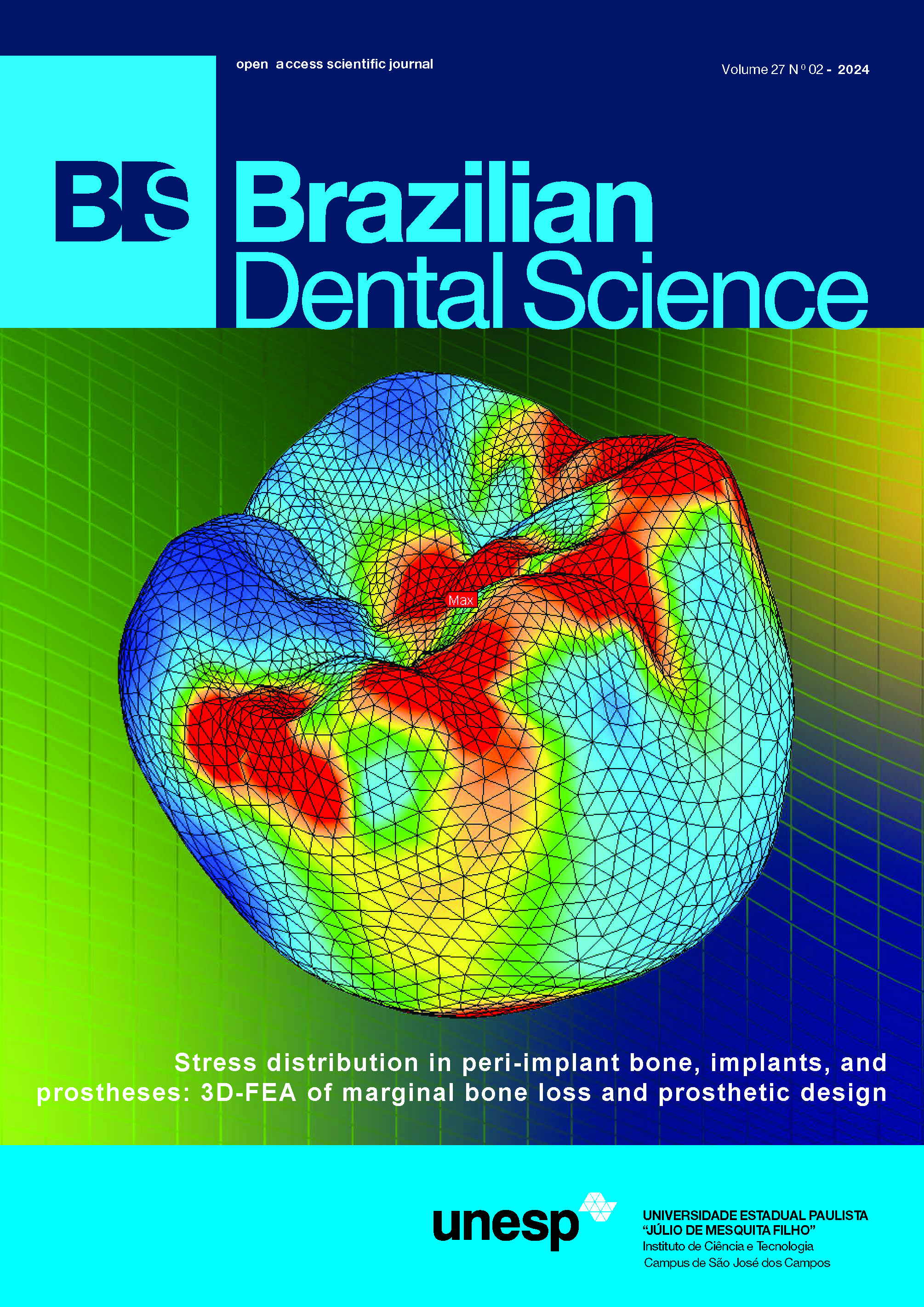Microbiological evaluation for antifungal activity of some metal oxides nanofillers incorporated into cold cured soft lining materials: clinical based study
DOI:
https://doi.org/10.4322/bds.2022.e2921Abstract
Objective: The aim of the current study was to evaluate the efficacy of addition of zirconium oxide (ZrO2), titanium oxide
(TiO2), and silica oxide (SiO2) nanoparticles to cold-cured soft liner on adhesion of Candida albicans (CA). Material and
Methods: Fifty-four patients had been selected and divided into three groups according to the modification of soft liner
with ZrO2, TiO2, and SiO2 nanoparticles (18 each of). Each patient received maxillary complete denture having three
cavities, the cavities were lined using cold cured soft liner modified with different concentration (0%, 3%, and 7%) of
metal oxide nanoparticles. On days 14 and 28, swaps were taken out from relining site and immediately cultured for
fungal evaluation. The number of colonies were counted, data collected and explored for normality using Shapiro-Wilk
test, logarithmic transformation of CA count was performed. Repeated and one-way ANOVA were used followed by
Tukey HSD. Independent-t test used to compare between CA counts at different periods. Results: The CA adhesion
was significantly decreased by the addition of ZrO2, TiO2 and SiO2 nanoparticles in comparison with control group, also
the antifungal coverage increased with nanoparticles concentration increased (P<0.005). The highest CA count was
identified in group SiO2 followed by ZrO2, while TiO2 showed the lowest CA count (P <0.001). Conclusion: Addition
of different nanoparticles; ZrO2, TiO2 and SiO2 to cold-cured soft liner is an effective method for reducing CA adhesion.
KEYWORDS
Antifungal agent; Candida albicans; Denture liners; Nanoparticles.
Downloads
Published
Versions
- 2022-03-29 (2)
- 2022-03-18 (1)




